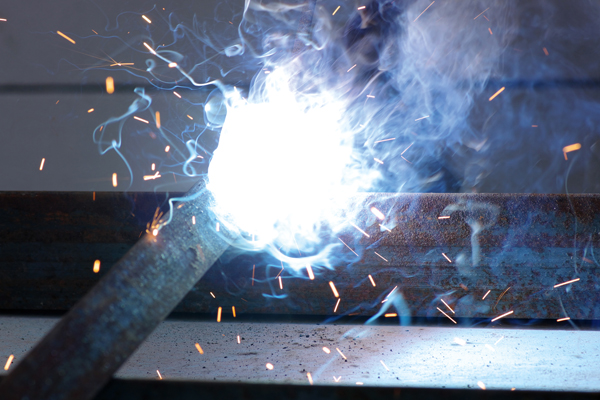The arc flash risk
Light and heat produced by an electrical arc can be enough to cause serious bodily harm, damage or fire. Pat Mynett reports.
An electric arc occurs whenever a circuit breaker, switch or isolator is opened and current is flowing in the circuit.
However, most of these devices are designed to control the arc under normal operating conditions.
An arc flash may occur when the arc is uncontrolled and enough energy is released to cause harm or damage.
ADVERTISEMENT
Arc flashes occur at high and low voltages. There is little discrimination – low voltage arc flash injuries are just as serious as high voltage injuries.
What is sufficient electrical energy? Let’s look at a domestic situation, then a commercial, industrial or mining situation.
In most dwellings the likelihood of electric shock is present, yet the risk of an arc flash is minor.
There is usually insufficient energy to cause a serious arc flash. The main switch (or main circuit breaker) is some distance from a transformer. The distance and smaller cable sizes result in much higher circuit impedance and lower fault current.
In a commercial, industrial or mining situation the results of an arc flash can be catastrophic.
The main switch or main circuit breakers may be only a few metres from a transformer fed by busbars or large cables. This means extremely low impedance and very high fault currents.
Causes
An arc flash can have many causes, categorised as:
- Group 1 – when the electrical system is static.
- Group 2 – when there is movement in the electrical system.
In the first group, an arc flash can have causes such as vermin, hot joints, etc. There can be substantial damage to equipment, but injury to people is extremely rare. Vermin tend to avoid areas frequented by people.
In the second group, the causes include closing or opening of circuit breakers, switches or isolators; applying earths; opening enclosures; dropping tools; inappropriate use of tools; etc. This is where most arc flash injuries occur.
Arc flash can be caused by:
- faulty or damaged switching devices;
- circuit breakers racked when closed;
- isolators opened on load;
- applying earths to energised conductors;
- closing a switch onto an earthed conductor;
- inadvertent contact through working close to live conductors;
- dropping tools onto live conductors; and
- drilling into enclosures and contacting an energised conductor.
Who gets hurt?
Most arc flash injuries happen to electrical workers, often due to human error, working live, complacency, lack of training, lack of maintenance or taking short cuts.
There is tremendous pressure on electrical workers to keep the electricity supply on when working on or close to energised conductors. This pressure comes from people who don’t have any understanding of electrical hazards.
Legislation in Australia allows work on, or close to, energised conductors only under strict conditions. Yet many electrical workers are still at risk.
Non-electrical workers who operate industrial switchgear are another group susceptible to arc flash injuries.
There are many non-electrical workers in industry that switch industrial electrical low voltage loads on and off. Some workers operate high-voltage switchgear to create an isolation point for non-electrical work, and most of them would not know what an arc flash is.
The statistics
Arc flash injury statistics are difficult to acquire, because such events are often recorded as electrical injuries.
About three years ago figures were obtained from one state’s hospitals on the number of people admitted with serious electrical (arc flash) burns.
When these figures are extrapolated nationally, an average of 30 people a year are admitted to hospital with arc flash burns, and one fatality occurs every two years.
These figures are backed up by the fact that there was one fatality and seven cases of serious burns in New South Wales, Queensland and Western Australia collectively for the three months ending November 2018. In 2014 two fatalities occurred in WA.
However, many arc flash injuries are not reported, and in some cases the information is suppressed for legal reasons.
The cost
When it comes to human costs it’s not just the injury, it’s the trauma of recovery (burns take a long time to heal and scar for life).
In addition, there is family trauma (living with someone who is in constant pain and disfigured), loss of income (many burns victims never return to work). The divorce rate for burn victims is extremely high.
In terms of financial costs, the loss of supply can be from an hour to several weeks.
A single piece of damaged equipment may be easily replaced, or a switchboard/transformer may be rendered beyond repair.
The cost can vary from a few dollars to millions of dollars. It’s likely that arc flash incidents cost Australian industries many millions of dollars each year.
Conclusion
Arc flash is a real and present hazard, yet the risk is often ignored or at least given a veneer of compliance by industry.
Most electrical workers do not understand arc flash. If they did, we would not have the number of injuries that occur at present. Arc flash training is available, but few companies take it up due to a lack of understanding of the subject.
-
ADVERTISEMENT
-
ADVERTISEMENT


